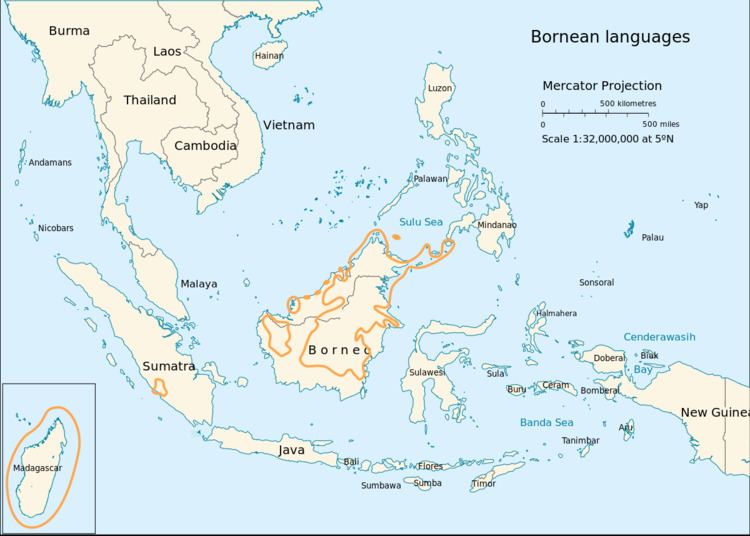Geographic
distribution: Borneo | ||
 | ||
Linguistic classification: Austronesian
Malayo-Polynesian
Bornean Subdivisions: North Bornean
Land Dayak
Kayan
Barito (4 families) Glottolog: None
nort2892 (North Bornean)
grea1283 (Barito)
kaya1333 (Kayanic)
land1261 (Land Dayak) | ||
The Bornean languages are a geographic group of Austronesian language families indigenous to the islands of Borneo and Madagascar, with the exclusion of Ibanic (Malayic Dayak) and other Malayic languages. There is little reason to think they form a genealogical clade.
Contents
Languages
The Bornean languages form a number of distinct branches of the Austronesian family.
North Bornean
North Bornean is a 1991/2010 proposal by Robert Blust that the Northeast Sabahan, Southwest Sabahan, North Sarawakan, and Melanau–Kajang families form an exclusive unit.
Kayan
The Kayan languages were specifically excluded from the North Borneo family by Robert Blust (1991).
Land Dayak
Land Dayak are the majority of the Dayak languages excluding Ibanic.
Barito
The Barito languages have common features due to extended contact. They fall into four families:
Proposed substratum
According to Roger Blench (2010), Austroasiatic languages were once spoken in Borneo. Blench cites Austroasiatic-origin vocabulary words in modern-day Bornean branches such as Land Dayak (Bidayuh, Dayak Bakatiq, etc.), Dusunic (Central Dusun, Visayan, etc.), Kayan, and Kenyah, noting especially resemblances with the Aslian languages of peninsular Malaysia. As further evidence for his proposal, Blench also cites ethnographic evidence such as musical instruments in Borneo shared in common with Austroasiatic-speaking groups in mainland Southeast Asia.
Blench (2010) claims that lexical forms shared among Bornean and Austroasiatic languages include 'rain', 'to die', 'back (of body)', 'flying lemur', 'monkey', 'barking deer', 'lizard', and 'taro'.
